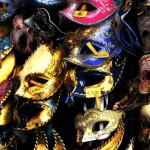Ancient Athens and the Renaissance are today seen as the two great peaks of Western Civilization. Renaissance thinkers would not have seen things that way. Obsessed with sources as they were, they wanted to push behind Rome to Greece and from Greece to Egypt. Those who were seeking an alternative to Christianity found it not in Athens but in Alexandria and Thebes.
Egyptian religion was not marginal to Renaissance sensibilities, but central. Martin Bernal writes (Black Athena, 1.152) “it is precisely from the Neo-Platonic and Hermetic traditions that the Renaissance drew its most characteristic vision of the infinite potential of man, and the belief that man is the measure of all things. Even in what the 19th- and 20th-century historians have seen as the ‘manly’ 14th and early 15th centuries, there was an enormous respect for the Egyptians.”
Renaissance publishing tells the story: “with the increase in contact between Italy and Greece, the Neo-Platonic and Hermetic writings of PselIos and the other promoters of the Byzantine Renaissance became available. In 1419 a copy of Hieroglyphika, a late-5th-century work on hieroglyphics by Horapollo, an Upper Egyptian, was brought to Italy and translated. The author had combined a correct interpretation of a number of signs ‘with the most grotesque allegorical reasons for those meanings.’ The work was enormously popular and confirmed the belief that hieroglyphics was the script of the mysteries, superior to alphabets because one sign was seen to compress rich meaning within it and to be unencumbered with the phonetics of mundane speech. In general, hieroglyphs and the enigmas they were supposed to contain became enormously important in the early 15th century” (152). When a Greek monk brought a manuscript of the Corpus Hermeticum to Cosimo de’ Medici in 1460, Cosimo told Ficino to put aside his work on Plato to work on Hermes (153-4).
Manuals of ancient religion published during the Renaissance identify gods by their Egyptian rather than their Greek names (157-8) and art works depicted supposedly Greek gods with the adornments of Egyptians religion (158). Even Renaissance science was affected. Copernicus, Bernal suggests (following Frances Yates), derived the idea of heliocentricity from Egyptian-influenced sources, and only subsequently did he offer mathematical proof (155-6).
Most Renaissance figures continued to follow Augustine in subordinating Egyptian to the Bible, and Greece to both, but Bruno considered Egyptian religion to be the true religion. Bruno wrote, “Do not suppose that the sufficiency of the Chaldaic magic derived from the Kabbalah of the Jews; for the Jews are without doubt the excrement of Egypt, and no one could ever pretend with any degree of probability that the Egyptians borrowed any principle, good or bad, from the Hebrews. Whence we Greeks own Egypt, the grand monarchy of letters and nobility, to be the parent of our fables, metaphors and doctrines” (quoted, p. 159).
It seems that we can gain a full and accurate view of Renaissance, especially the dark magical side of that moment, by reckoning with its Hermetic, Egyptian roots.















